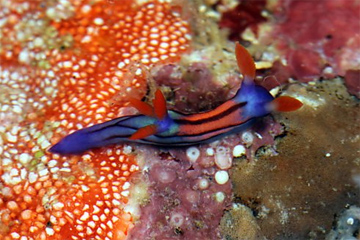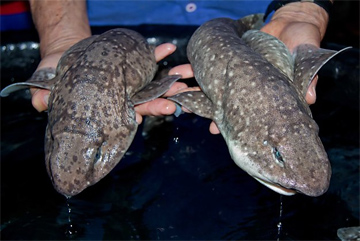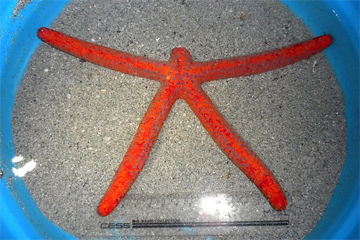Scientists believe they have discovered more than new 300 species during a six-week expedition to the Philippines.
The expedition, which involved scientists from the California Academy of Sciences and several Philippine scientific institutions, scoured terrestrial and marine ecosystems and turned up “dozens of new insects and spiders, deep-sea armored corals, ornate sea pens, bizarre new sea urchins and sea stars, a shrimp-eating swell shark, and over 50 colorful new sea slugs,” according to a statement from the California Academy of Sciences.
 A new species of Nembrotha nudibranch, a type of toxic sea slug, discovered during the expedition. Photo: Terry Gosliner / California Academy of Sciences
|
The discoveries will be confirmed in coming months as researchers use DNA sequencing to determine whether the creatures are new to science.
The initial findings however seem to confirm the Philippines as a key biodiversity hotspot, both for its wealth of species and the risk they face, according to Terrence Gosliner, Dean of Science and Research Collections at the California Academy of Sciences and leader of the expedition.
“The Philippines is one of the hottest of the hotspots for diverse and threatened life on Earth,” he said. “Despite this designation, however, the biodiversity here is still relatively unknown, and we found new species during nearly every dive and hike as we surveyed the country’s reefs, rainforests, and the ocean floor. The species lists and distribution maps that we created during this expedition will help to inform future conservation decisions and ensure that this remarkable biodiversity is afforded the best possible chance of survival.”
The expedition team has already used data to make a formal recommendation on priority zones for conservation as well a key areas for reforestation to reduce sediment damage to reefs. The scientists also highlighted pervasive plastic litter as a threat to marine life.
Related articles
















